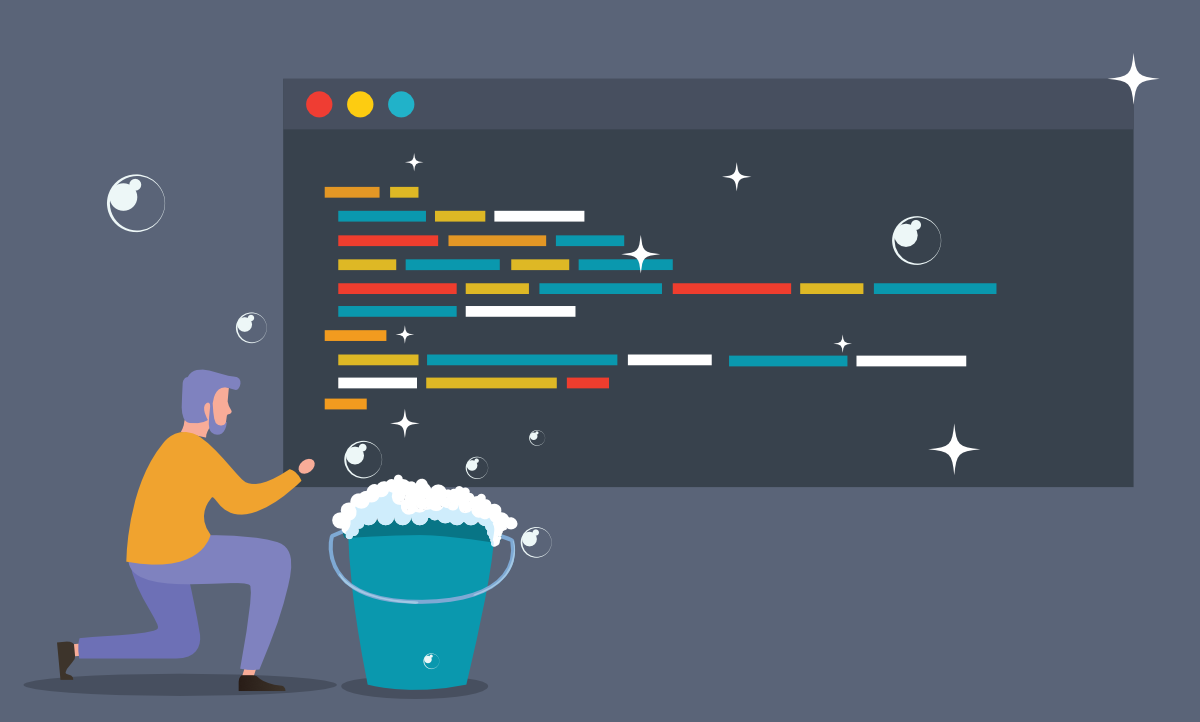Did you recognize that maintaining software is as important as building it? But, so as to take care of it, some practices must be implemented within the development team.
Have you ever heard of the Boy Scout rule? you must leave the camp cleaner than you found it. This rule must even be followed by the developer who begins undertaking software maintenance.
As a result, Clean Code is over a technique. it is a philosophy that’s extensively employed in the technology teams of organizations and startups to stay software as bug-free and up thus far as possible.
As a result, I wrote this text to elucidate the core ideas, best practices, and benefits of working with a stress on clean code.
9 Clean Code Principles
Uncle Bob provides a minimum of 9 good principles for using Clean Code in his book to own your code working smoothly. they’re as follows:
1. Meaningful Names:
Names are everywhere in software. We name variables, functions, arguments, classes, files and directories. Because we do most of it, we’d better hump well. So use names in your code that are intention-revealing, that avoid disinformation, that are pronounceable, searchable and meaningful.
2. take care with comments:
Nothing is more beneficial than a well-placed comment. Also, nothing is more destructive than an old crufty comment that spreads lies and disinformation. Therefore, comments aren’t always good, and may even be harmful from time to time. So use comments only if strictly necessary and remember to update them whenever you create changes to the code.
3. Don’t Repeat Yourself
One of the foremost important rules in Clean Code. this idea shows that there mustn’t be two parts of the software performing the identical function. on every occasion you see duplication within the code, it represents a missed opportunity for abstraction (i.e. extracting that code to a separate function or class).
Kent Beck also made it one in all the principles of utmost Programming and called it: “Once, and only once”.
4. Follow code patterns
Patterns make the code much easier to know. Thus, character variations in naming, like the usage of capital or lowercase letters (namePerson, NamePerson, nameperson), should be standardized.
If you’re continuing a project that has already begun, listen to the patterns that are created and keep them in your updates; this practice improves the performance of other developers and prevents system issues.
5. The Boy Scout Rule
I’ve already mentioned this but leave everything cleaner than you found it. It’s not enough to write down the great code. The code must be kept clean over time. The code couldn’t become a multitude if we all submit our code a bit cleaner than once we first saw it.
6. Error Handling
When we program, we must cope with errors. Things can get it wrong, and once they do, we are in command of ensuring that our code performs what it’s purported to do. Then, clean code must readable, but even be robust. It must do what was planned, but if a blunder appears, it should be able to handle it.
7. Keep tests clean
Code is merely considered clean after it passes the tests. However, after the programmers get a set of tests to pass, they have to ensure that those tests were convenient to last anyone else who needed to figure with the code. as an example, the test suite shouldn’t take too long to execute, because if that happens the team are going to be discouraged to place the code through tests.
8. Keep functions small
The first rule of functions is that they ought to be small. Functions should do only 1 thing and have it away well. If you’ve got a function in your code with more one concern (i.e. doing quite one thing), that function are often split in smaller functions with meaningful names. This makes your code easier to grasp and maintain within the future.
9. think about your code as a book
This last principle principle is crucial to wash Code. Your code must be easy to read and understand, sort of a regular book. Other developers reading your code, must be ready to recognize what each function does, what each variable is employed for and also the general structure of the system.








